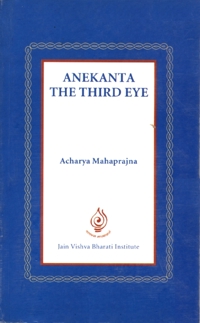
A gentleman remarked, "The third eye is located in the middle of our eyebrows. The eye with which Shiva reduced Kamadeva to ashes, that is the third eye. In the dictionary of yoga, the third eye is the Agya chakra. So, then how can you say the third eye is that of anekanta?"
The question is valid. In yoga the agya chakra has been referred to as the third eye. When it grows in potency, even Kama can be turned to ashes. Whether we think of this as an ancient myth or as an aspect of yogic penance, it is the truth.
If we reflect on this truth with sharir sastra, manasa sastra and kama sastra, then the truth becomes all the more clear. To clarify this truth also, anekanta is of use. While reflecting on any truth if we consider only one aspect of it then even truth can turn false. Only when we look at it from its different perspectives and answer different questions arising thereby can we say we are talking about truth. Anekanta is the third eye because it is different from the two physical ones.
With these two eyes we see the gross world. If all our activities took place on the basis of the gross world then we would use only the empirical perspective: the perspective that would enable us to see the different gross modes. But our world is not just the gross or just that which is visible. Our world is subtle, unmanifested and formless. If we interpret our lives purely on the basis of the gross world and what we see then truth will go helter-skelter. With half-truth no solution can be found. To understand the whole truth, to find a comprehensive solution, we have to take into consideration both the gross and the subtle world. This is the basis of anekanta.
 Acharya Mahaprajna
Acharya Mahaprajna
